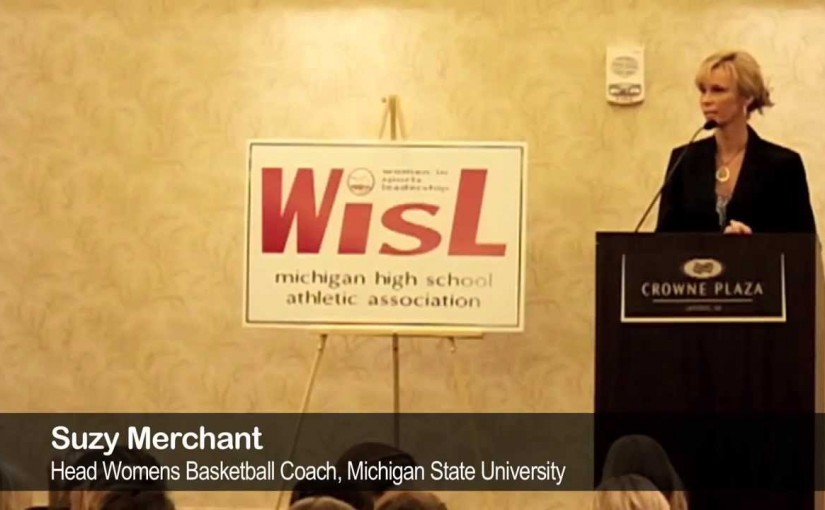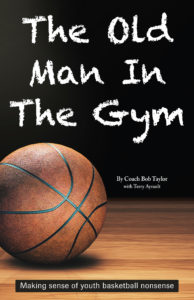Versatile press breaker thwarts zone, man defenses
Our team recently started using a press breaker that’s successful against all types of presses — zone and man-to-man. This press breaker not only gets an offense through the press, but it also aggressively attacks the basket and offers numerous shot opportunities.
This simple, yet relatively unstoppable system worked for me at various levels from junior high to varsity. Against man-to-man pressure, the main strategy is to get the ball in and dribble it up the court. Below is an explanation of how the system works against zone presses.
Press breaker vs. zone pressure
If you run a three-guard system, 1, 2 and 3 are all guards. We run a three-post system, so 1 is our best ball-handling post. This player should be big enough to see over pressing guards who contest the inbounds pass.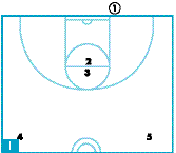
DIAGRAM 1: When the opponent scores, 1 immediately grabs the ball and passes it in, hopefully before the opponent sets up its press.

DIAGRAM 2: As soon as 1 has secured the ball and is ready to make the inbound pass, 3 goes opposite 2. Instruct your players to cut in front of opposing defenders, so that the inbounds pass cannot be denied.
If the defenders insist on denying, have your players drive them toward the baseline and then break downcourt as 1 throws a pass over the top. If needed, have 4 or 5 break up to help get the ball inbounds.
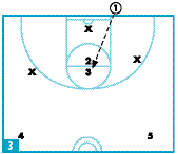
DIAGRAM 3: If the defense plays too close to the inbounder, have 1 throw a pass over the top.
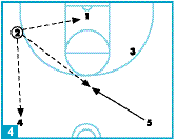
DIAGRAM 4: When the ball is inbounded, 1 must always stay farther back than the ball to serve as a safety release or as a ball-reverse player.
The offside post breaks to the middle to give the player with the ball three possible passing options.
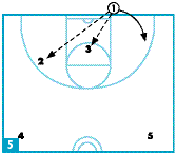
DIAGRAM 5: If one of the guards takes the middle spot, 1 breaks downcourt to fill the space vacated by the guard and trades duties with them.
Press break keys
The key teaching point in breaking a press is that the receiver of the pass must catch the ball and look upcourt for the best option pass or dribble.
Oftentimes, a young player’s first reaction is to catch the ball and immediately start dribbling downcourt to beat the press. It’s imperative to break this habit. The ball moves to the openings in the zone much faster by passing than by dribbling — much faster than any defender can move.
Press break vs. 1-2-2 zone
We see a lot of 1-2-2 presses in our league. We found that several simple movements and counters can break this zone.
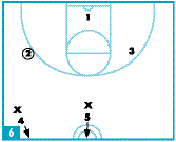
DIAGRAM 6: If the post pass to the middle is denied, have 4 and 5 release and go long. There is no backside help, and there should be an opening in the zone before the next two defenders have a chance to break up and intercept the pass.
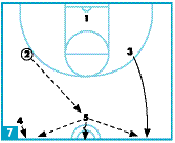
DIAGRAM 7: On downcourt passes, all your players must turn and attack down the floor. You’ll find that the backside guard is open almost 100 percent of the time. You have an advantage going downcourt, and you must instill that notion in your players — make the defense pay for pressing you. If you merely cross half court and set up, they have no reason to stop pressing.
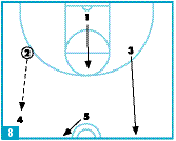
DIAGRAM 8: On passes up the sideline, the middle post (5) runs a diagonal cut downcourt. Most of the time, if this cut is made in front of the defenders, 5 is wide open. If defenders are drawn to 5 and focus on stopping this pass, 1 and 3 are open.
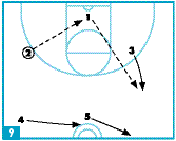
DIAGRAM 9: If no pass ahead is available, have 2 pass the ball back to 1, who quickly reverses it back to 3. Press defenders almost always shift to the ball side, and this allows the backside to be open.
As soon as 3 receives the reversal pass from 1, he or she must attack and look downcourt before the defense can rotate and recover.
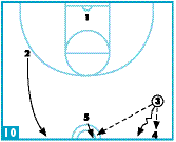
DIAGRAM 10: 3 must first look to pass downcourt. If all the offensive players are covered, he or she quickly attacks the defense by dribbling.
Once again, the object of the press break is to get down the floor as fast as possible and aggressively attack the basket. You must make an opponent pay for pressing you. After a few times of beating the press and scoring easy baskets, most opposing teams call off their full-court pressure.

